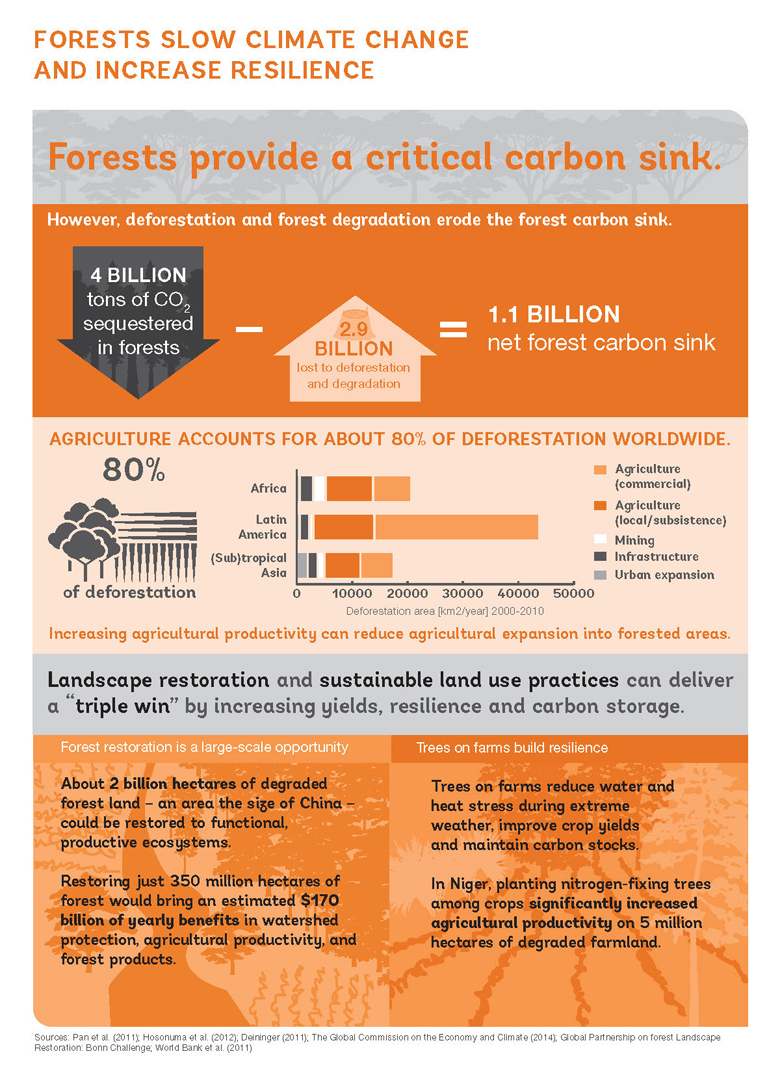STORY HIGHLIGHTS
- Reducing emissions from deforestation and forest degradation, or REDD+, is an important tool for mitigating (lindre /afbøde) climate change and conserving forests.
- The REDD+ process supports the important building blocks of national climate change strategies – collaboration across the agriculture, forest and energy sectors, input from diverse stakeholders like indigenous peoples, civil society organizations and women, and a focus on public-private partnerships.
- The World Bank Group, through trust funds, provides investment financing, results-based financing, and technical assistance to countries working on REDD+.
WASHINGTON D.C., 4. December 2015 (World Bank): Miombo forests cover more than half of Mozambique’s land area. Named for the oak-like miombo trees that dominate the area, millions of people, along with vulnerable species like African elephants and black rhinos, depend on these ecosystems for nourishment and shelter.
But demand for timber, commodities such as cotton, tobacco and sesame, and a growing international market for gas and coal are driving deforestation in Mozambique at a rate that’s increasing every year.
At the same time, higher temperatures and lower rainfall have made it more difficult for small producers and families to make ends meet.
Mozambique is one of a number of countries that is looking for better solutions to help protect its rich forest resources.
One of those solutions is REDD+, or Reducing Emissions from Deforestation and Forest Degradation, which creates incentive for developing countries to better protect, manage and sustainably use their forest resources, and at the same time contribute to conserving biodiversity and to the global fight against climate change.

The World Bank Group has been protecting and investing in forest landscapes for many years through a number of initiatives, providing fresh sources of financing for the sustainable use of forest resources, from both public and private partners, focused on conservation, sustainable land use and greenhouse gas emission reductions at scale.
These efforts support policy reforms and objectives that help countries move towards low carbon development while helping to provide sustainable, climate-resilient incomes to those who depend on the forests for their livelihoods.
Given that emissions from land use contribute significantly to climate change, many countries have been particularly focused on changes they can make in the land sector, which encompasses agriculture and forestry, as an important part of their approach to mitigating climate change.
A number of developed and developing nations are giving attention to forests’ potential for emission reductions in their proposed Intended Nationally Determined Contributions, or climate action plans, both through reduced deforestation and by enhancing carbon stocks, for example through plantations and sustainable forest management.
In side events on December 4 at COP21 in Paris, three African countries that are working with the World Bank Group will showcase examples of how REDD+ has helped establish the building blocks they need to conserve forests and support green economic growth.
Læs videre på
http://www.worldbank.org/en/news/feature/2015/12/04/showcasing-the-link-between-forests-and-climate-change-three-examples-of-redd-in-africa
Begynd fra: “The government of Mozambique will present the….”














